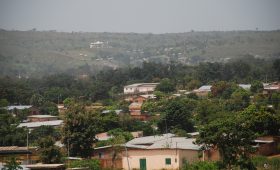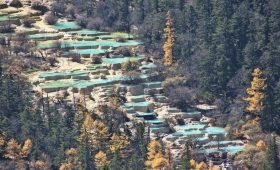Exploring Tell Halaf in Syria
History of Tell Halaf
Tell Halaf, located in northeastern Syria near the Khabur River, is an archaeological site with a rich history dating back to the Neolithic period. It is the type site of the Halaf culture, which thrived from around 6100 to 5400 BCE. After a long period of abandonment, the site saw significant developments during the Late Bronze Age under the Mitanni and Hittite empires. By the 10th century BCE, it became the seat of the Aramaean kingdom of Bit Bahiani, known as Guzana. The site continued to be significant through the Assyrian period and remained inhabited until the Roman-Parthian era.
Notable Features
Tell Halaf is renowned for its impressive collection of basalt statues and intricately carved reliefs, which offer insights into the cultural heritage of the region. Among the notable features is the “Western Palace,” built by King Kapara, adorned with statues and reliefs that reflect the Neo-Hittite style. The site also includes the “North-Eastern Palace,” which served as the seat of Assyrian governors.
Archaeological Discoveries
Max von Oppenheim, a German diplomat, discovered Tell Halaf in 1899 while traveling through northern Mesopotamia. His initial findings included significant statuary pieces, such as the “Sitting Goddess.” Although he had no permit to excavate at the time, Oppenheim’s later efforts led to the uncovering of the site’s rich historical layers, including the entrance to the “Western Palace.”
Visiting Tell Halaf
For those interested in exploring Tell Halaf, the best times to visit are during the spring and fall when the weather is more temperate. However, it’s crucial to check current travel advisories and the political situation in Syria before planning a trip, as safety is a primary concern.
Getting There
The nearest major airport to Tell Halaf is in Aleppo. From there, travelers can hire a taxi or take a bus to reach the site, which is approximately a two-hour journey. The scenic landscapes along the way offer a glimpse into the region’s natural beauty. Alternatively, joining a guided tour can provide both transportation and valuable insights into the site’s history.
Exploring the Site
Once at Tell Halaf, visitors can explore the extensive ruins on foot. Comfortable shoes are recommended due to the site’s vast area. Vehicles are not allowed within the archaeological site, ensuring a peaceful exploration experience. Local guides are available for those who prefer a more in-depth understanding of the site’s historical significance.
Key Facts
- Tell Halaf is an archaeological site in northeastern Syria, near the Khabur River.
- It is the type site of the Halaf culture, dating back to 6100-5400 BCE.
- The site was a significant center during the Mitanni, Hittite, and Assyrian periods.
- Notable features include the “Western Palace” and the “North-Eastern Palace.”
- Max von Oppenheim discovered the site in 1899, leading to significant archaeological findings.
- The best times to visit are in spring and fall, with Aleppo being the nearest major airport.
- Exploring the site on foot is recommended, with local guides available for detailed tours.




